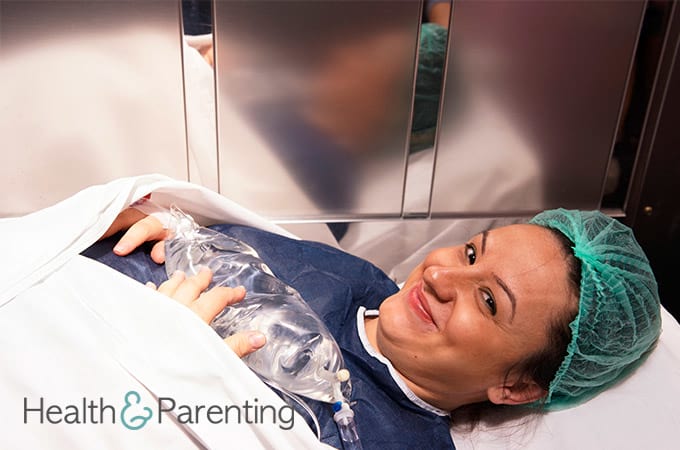A cesarean birth (c-section) is the delivery of a baby through an incision in the mother’s abdomen. Over 30 percent of babies born in the US are delivered by cesarean, and the number is nearly as high in the UK. Cesarean birth is the most common procedure done in the operating room. While there is sometimes a medical need for a cesarean birth, keep in mind it is major abdominal surgery.
Elective c-sections are pre-planned for various medical reasons including breech presentation, some uterine abnormalities, chronic medical conditions, and a big baby. Some women may choose cesarean birth due to trauma from a previous birth experience.
Emergency cesareans are not planned in advance, and are usually carried out because the mother and/or baby is thought to be at serious risk. If the doctors are concerned about the survival of mother or baby, the c-section will be carried out rapidly. In other instances, there may be a less severe concern for mother or baby, and then a c-section will occur in a less hurried fashion.
Before the procedure
The doctor will explain why he or she feels this procedure is necessary, and you will be asked to sign a consent form. Your birth partner should be allowed into the operating room with you for the birth, although in a rapid emergency situation, this may not be possible.
General anesthetic is rarely used for c-sections. You are most likely to require an epidural or spinal for pain relief. These allow you to stay awake during the birth, but numb your lower half to prevent you feeling the procedure.
Once your anesthesia has been administered, a catheter will be inserted into your urethra, and an IV will be started. If necessary, the top section of your pubic hair may be shaved to allow for the incision.
Once in the operating room, you’ll be asked to drink an antacid medication. This is given as a precautionary measure in case you later require general anesthetic. Antibiotics will be administered through your IV.
The surgery
It’s now time for the surgery. You may be given some extra anesthetic at this point, and a small blue screen will be erected to prevent you from seeing the surgery. Your birth partner should be with you by this point, sitting next to you to offer reassurance. You shouldn’t feel any pain during the procedure, but you may feel pressure or tugging as the operation is performed.
Your tummy will be cleaned using an antiseptic solution, and then a 10 cm (4 inch) horizontal incision will be made across your bikini line. In a small number of c-sections, a vertical cut will be made instead. Your bladder will be pushed down, and the doctor will make an incision into your uterus. If your waters haven’t yet broken, this will be done now. Then the doctor will reach in and deliver your baby. The cord will be cut, and then you should be able to meet your baby.
At this point, you will be given a shot to help deliver the placenta. If your baby is well, you and your partner should be able to enjoy skin to skin contact for the remainder of the surgery. Your uterus will be closed using dissolvable stitches, and then each layer of tummy muscle will be stitched back together. Stitches or staples will be used to close the incision site, and these will need to be removed up to a week later.
You should expect to stay in hospital for a few days. Remember, a cesarean birth is major surgery so it may take you a couple of months to fully recover.
Do you enjoy this App? Good news! You can now also download our new Baby App for iPhone / iPad or Android. Click Baby+ iOS or Baby+ Android to install the App, and prepare for the arrival of your little one(s).
Written by Fiona, proud owner of a toddler, @fiona_peacock
This information is not intended to replace the advice of a trained medical doctor. Health & Parenting Ltd disclaims any liability for the decisions you make based on this information, which is provided to you on a general information basis only and not as a substitute for personalized medical advice. All contents copyright © Health & Parenting Ltd 2017. All rights reserved.











